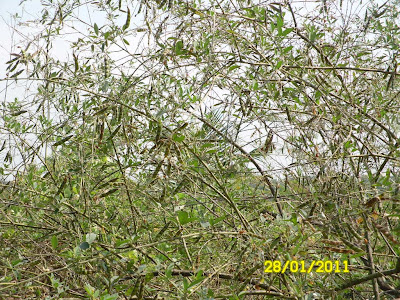before the advent of congested cities and the resultant high-density-high-rise models of residences, people and societies have traditionally built their own homes with locally available material and labour.
even today, rural folk continue to abide by these ecologically sustainable and low environmental impact (and thus low cost) tenets on models of housing construction.
following such traditions, we are building our walls with the adobe brick maker....
this is not part of the adobe acrobat suite; this is a method of making simple, strong and unfired (aka sun-fired) bricks for house construction.
adobe is simply a mixture of soil and water and some straw/dung which is cast into cuboid shapes and dried in the sun.
this method saves cement (neither the mortar nor the plastering will use any cement).
it is a batch process, i.e., you can complete making the bricks fully prior to starting construction (as against cob walls which have to be made as the clay is being mixed).
we also contemplated rammed earth walls, but felt that we did not have the necessary experience to take it on (both cob and adobe bricks have been already used for the construction of the kitchen and bathroom).
ok...here it goes.
of course we need tons of dirt/soil. so dig it up with the mini excavator.
this resultant hole in the ground could be a mini pond, foundation pit for another house, etc.

then comes the first of the exhausting acts. lugging this dirt to the mixing spot.

then piling it up. we made piles with around 30 containers of soil per pile (the one being loaded onto my head in the earlier pic).

then make crater-like holes on the pile and fill it up with water.

neat, isnt it?

then mix away. the second of the exhausting acts.
we have a video of this mixing process and will upload that separately.

add the chopped straw. this is the same concept as fibre reinforced plastic.

do the tribal dance. this step is super vital for the complete and effective mixing of the water into the clay.

the shovel mixing and dance mixing is done around 3-4 times to get the correct pastiness of the soil mixture.
this is the final mixture. our subsoil dirt was a bit gravelly and hence it looks grainy.

it is best to allow this mixture to remain overnight.
the wetness just spreads more and evenly.
the mixed soil is poured into these brick moulds.


dimensions of larger mould is 10" X 14" X 3.5"
first wet the mould and place on ground.

then act 3 of the exhausting trilogy. ferrying the mixture to the brick layers.
pack the mixture into the mould. tamp the edges well to get the smooth and straight edges.
use a scale/thin plank to even out the top.

straddle the mould and yank the mould (almost at once after filling) slowly while gently shaking it.

if your mixture is done well, the brick will retain its shape. also observe edges for smoothness to check the effectiveness of the tamping.
after 2 hours of brick laying, here is how our first batch looks.



in this weather, we were able to turn the brick (on their edge for quicker and comprehensive drying) within 48 hours and brick is fully dried and ready to use in 7 days (of decent sunny weather).
there is a strength test recommended - dropping a brick on its edge from 4 feet.

strong. barely chipped the edge

there is also a strength test which is not recommended.

total bricks needed ~1700
total containers of dirt ~2300
i.e., upwards of 23 tons of soil will need to be dug, ferried, mixed, laid, stacked and made into walls.



































